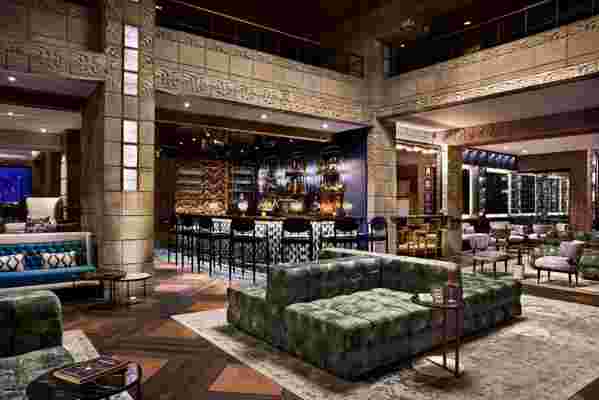An Exclusive Look Inside the Iconic Arizona Biltmore’s Major Renovation
Opened in 1929, Arizona Biltmore still sparkles with the old Hollywood glamour of the Roaring Twenties. Marilyn Monroe, Elton John, Frank Sinatra, and many American presidents, from Herbert Hoover to Barack Obama, have all rested their heads in this architectural gem. Surrounded by the mountains, desert, and stucco rooftops of Phoenix, the hotel was designed by Frank Lloyd Wright protégé Albert Chase McArthur. The influences of Wright, who consulted on the hotel, can be seen throughout the property, such as the signature Prairie-style design. After undergoing a $70 million renovation, in which great care was taken to preserve the hotel’s architectural details, the property will once again open to the public this May.
“The building is iconic and known for its Wright influences, so staying true to this without copying or emulating it was important to us,” says PHX Architecture’s Erik Peterson, the architect who led the project. “Everything new was done with an organic inspiration, but also done with today’s cutting-edge technology. That is how Wright did design in his day….Nothing is timid, but instead bold.”

A look at the newly renovated hotel bar.
PHX Architecture, alongside design team Virserius Studio, took great pains to understand the resort’s glittering heritage and highlight its illustrious history, while lending it a contemporary feel. The designers studied old photos as part of their research to learn how guests socialized and moved throughout the grand spaces. “There was a certain flair. People were quite glamorous at that time. Since then, we have become a bit more casual,” says Virserius Studio founder and principal Therese Virserius. “We wanted to return the flow of the resort to a curated, more intimate space conducive to how people move about.”
The design team created an event lawn to accommodate and entertain more guests alfresco without feeling like massive sprawl. “We believe Frank Lloyd Wright would have liked that,” Virserius explains.

The hotel features a new adult pool and bar.
Maintaining the Art Deco elements was important to the designers. “The Wright Bar has the best Art Deco feel, with its ceiling details and metal ironwork,” says architect Peterson. Wright and McArthur created the signature precast Biltmore Block, depicting abstracted leaves inspired by palm tree trunks. The design team worked with a company to re-create and cast blocks on site to replace those that had been damaged through the years.
Additional spaces in the remodel include Central and South American–inspired restaurant Renata’s Hearth, refreshed stand-alone guest cottages, a reimagined family pool equipped with a triple water slide, a 200,000-square-foot meeting space, a new spa and fitness building, and a new adult pool and bar.
As a nod to Frank Lloyd Wright’s ornate stained glass and mosaics, the design team created exclusive, bespoke Italian mosaics at the bottom of the Saguaro pool. The tiles at the bottom of the pool match the Saguaro art glass in the lobby, said to be attributed to Wright. The limited-edition sculptures along the cabanas are by Italian manufacturer Bisazza.

Inside of the Biltmore's cottage rooms.
Arizona Biltmore is one of the last standing Wright-inspired hotels (Pennsylvania’s Falling Rock Hotel and Iowa’s Park Inn Hotel are still hosting guests). Unfortunately, most of Frank Lloyd Wright’s hotels have disappeared: A fire destroyed Montana’s 1909 Bitter Root Inn in 1924; Tokyo’s Imperial Hotel, completed in 1923, was demolished in 1968; and Wright’s 1911 Lake Geneva Hotel burned to the ground in 1970.
“Wright never wanted his buildings to become museums, but instead, they were to be lived in, modified, and adjusted to how life changes over time,” the architect Peterson adds. “That is what makes living architecture and organic design.”